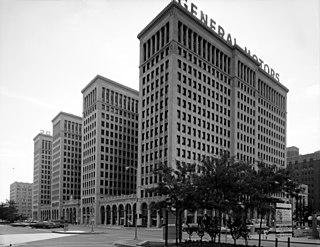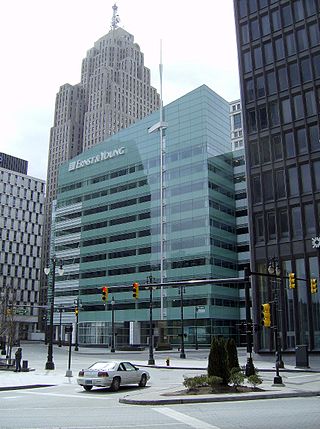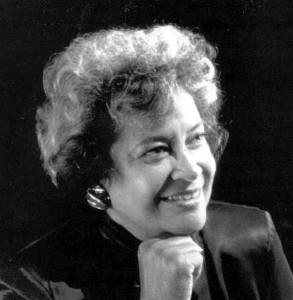Related Research Articles

Albert Kahn was an American industrial architect who designed industrial plant complexes such as the Ford River Rouge automobile complex. He designed the construction of Detroit skyscrapers and office buildings as well as mansions in the city suburbs. He led an organization of hundreds of architect associates and in 1937, designed 19% of all architect-designed industrial factories in the United States. Under a unique contract in 1929, Kahn established a design and training office in Moscow, sending twenty-five staff there to train Soviet architects and engineers, and to design hundreds of industrial buildings under their first five-year plan. They trained more than 4,000 architects and engineers using Kahn's concepts. In 1943, the Franklin Institute posthumously awarded Kahn the Frank P. Brown Medal.

Wirt Clinton Rowland was an American architect best known for his work in Detroit, Michigan.
Ulysses Anthony Ricci (1888–1960) was an American sculptor known primarily for his architectural sculpture. Born in New York City, Ricci was an apprentice at the Perth Amboy Terra Cotta Works in New Jersey from 1902 to 1906.

Cadillac Place, formerly the General Motors Building, is a landmark high-rise office complex located at 3044 West Grand Boulevard in the New Center area of Detroit, Michigan. It was renamed for the French founder of Detroit, Antoine Laumet de La Mothe, sieur de Cadillac. It is a National Historic Landmark in Michigan, listed in 1985.
Charles Nathanial Agree was an American architect in Detroit, Michigan.

The Brush Park Historic District is a neighborhood located in Detroit, Michigan. It is bounded by Mack Avenue on the north, Woodward Avenue on the west, Beaubien Street on the east, and the Fisher Freeway on the south. The Woodward East Historic District, a smaller historic district completely encompassed by the larger Brush Park neighborhood, is located on Alfred, Edmund, and Watson Streets, from Brush Street to John R. Street, and is recognized by the National Register of Historic Places.

Joseph Nathaniel French, Sr. was an architect with Albert Kahn Associates from 1914 to 1967. He was the chief architect for the Fisher Building in Detroit, Michigan.

The Buhl Building is a skyscraper and class-A office center in Downtown Detroit, Michigan. Architect Wirt C. Rowland designed the Buhl in a Neo-Gothic style with Romanesque accents. Constructed in 1925, it stands at 26 stories in the Detroit Financial District across Congress Street from the Penobscot Building and across Griswold Street from the Guardian Building, all of which were designed by Wirt C. Rowland. The Buhl Building stands on the corner of Congress St. West, and Griswold St. in Downtown Detroit. The building stands atop what used to be the Savoyard Creek near its confluence with the Detroit River. In 1836, the creek was covered and turned into a sewer. The Savoyard Club occupied the 27th floor of the Buhl Building from 1928 until its membership dwindled and the club closed in 1994.

The DoubleTree Suites by Hilton Hotel Detroit Downtown - Fort Shelby is a restored historic high-rise hotel, located at 525 West Lafayette Boulevard in Downtown Detroit, Michigan.

One Kennedy Square is a 10-story building located at 777 Woodward Avenue in Downtown Detroit, Michigan, near Campus Martius Park. The building is bordered by Griswold Street, Michigan Avenue and Woodward Avenue, and stands on the site of the old Detroit City Hall. It is occupied by the Ernst & Young accounting firm.

Norma Merrick Sklarek was an American architect. Sklarek was the first African American woman to become a licensed architect in the states of New York (1954) and California (1962), as well as the first Black woman to become a member of the American Institute of Architecture (AIA). Her notable works include the United States Embassy in Tokyo, Japan (1976) and the Terminal One station at the Los Angeles International Airport (1984).Sklarek is credited with helping to pave the way for other female and minority architects. AIA board member Anthony Costello called her the “Rosa Parks of architecture” in the AIA newsletter.

The architecture of metropolitan Detroit continues to attract the attention of architects and preservationists alike. With one of the world's recognizable skylines, Detroit's waterfront panorama shows a variety of architectural styles. The post-modern neogothic spires of One Detroit Center refer to designs of the city's historic Art Deco skyscrapers. Together with the Renaissance Center, they form the city's distinctive skyline.
Eric J. Hill, Ph.D., FAIA, is a Professor of Practice in Architecture at the University of Michigan. He earned his bachelor's degree in Architecture in 1970 from the University of Pennsylvania, a Masters in Architecture from Harvard in 1972, and a Ph.D in Architecture from the University of Pennsylvania in 1976. He was a Marshall Research Fellow at Denmark's Royal Academy of Fine Arts from 1972 to 1973. He is the co-author, along with John Gallagher, of AIA Detroit: The American Institute of Architects Guide to Detroit Architecture. He has served as a Director of Urban Planning and Design at the Detroit firm of Albert Kahn Associates. He has participated in projects such as the promenade on the Detroit International Riverfront, the Detroit Opera House restoration, and the Cadillac Place redevelopment. He has received numerous awards from the American Institute of Architects.

The Edsel and Eleanor Ford House is a mansion located at 1100 Lake Shore Drive in Grosse Pointe Shores, northeast of Detroit, Michigan; it stands on the site known as "Gaukler Point", on the shore of Lake St. Clair. The house became the new residence of the Edsel and Eleanor Ford family in 1928. Edsel Ford was the son of Henry Ford and an executive at Ford Motor Company. The estate's buildings were designed by architect Albert Kahn, its site plan and gardens by renowned landscape designer Jens Jensen. The property was listed on the National Register of Historic Places in 1979, and was designated a National Historic Landmark in 2016.

The Russell Industrial Center is an industrial factory turned to commercial complex of studios and shops that is located at 1600 Clay Street in Detroit, Michigan. The Russell Industrial Center is a 2,200,000-square-foot (200,000 m2), seven building complex, designed by Albert Kahn for John William Murray in 1915. It contains studios and lofts and serves as a professional center for commercial and creative arts.

Julius Kahn was an American engineer, industrialist, and manufacturer. He was the inventor of the Kahn system, a reinforced concrete engineering technique for building construction. The Kahn system, which he patented in 1903, was used worldwide for housing, factories, offices and industrial buildings. He formed his own company, Trussed Concrete Steel Company, as a manufacturing source for his inventions. He also founded United Steel Company and was chairman of Truscon Laboratories.

George DeWitt Mason was an American architect who practiced in Detroit, Michigan, in the latter part of the 19th and early decades of the 20th centuries.
African-American architects are those in the architectural profession who are in the United States.

The University of Michigan Central Campus Historic District is a historic district consisting of a group of major buildings on the campus of the University of Michigan in Ann Arbor, Michigan. It was listed on the National Register of Historic Places in 1978.

Clair W. Ditchy (1891–1967) was an American architect in practice in Detroit from 1922 until 1967. From 1953 to 1955 he was president of the American Institute of Architects.
References
- 1 2 3 Williams, Vanessa (April 1, 1996). "Building From Scratch: Beverly Hannah Jones laid the blueprint for her own enterprise". Black Enterprise .
- 1 2 Rose, Sylvia (2004). Rise up: a call to leadership for African American women. Downers Grove, Ill.: InterVarsity Press.
- ↑ "Beverly Hannah: Architect Extraordinaire". Michigan State University (MSU). April 1, 2003. Archived from the original on January 28, 2004.
- 1 2 Snavely, Brent (April 9, 2007). "Downtown duo". Crain's Detroit Business .
- ↑ Hansen, Heidi (March 17, 2005). "Gov. Granholm Makes Appointments To State Fire Safety Board". US Fed News.
- ↑ "Hannah, Neumann-Smith In New Joint Venture". CBS Detroit. May 21, 2013.